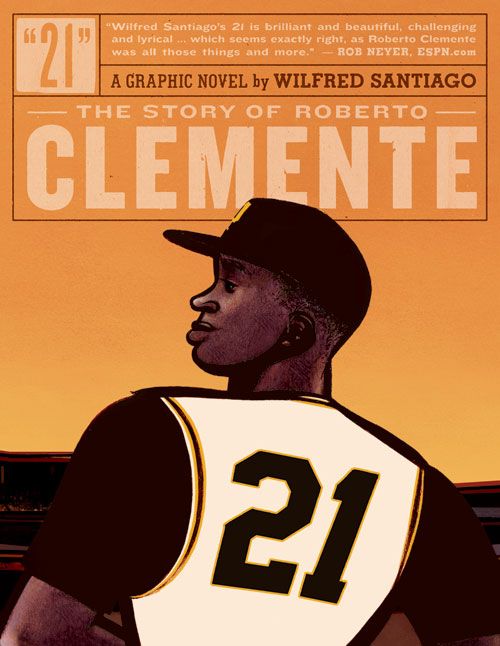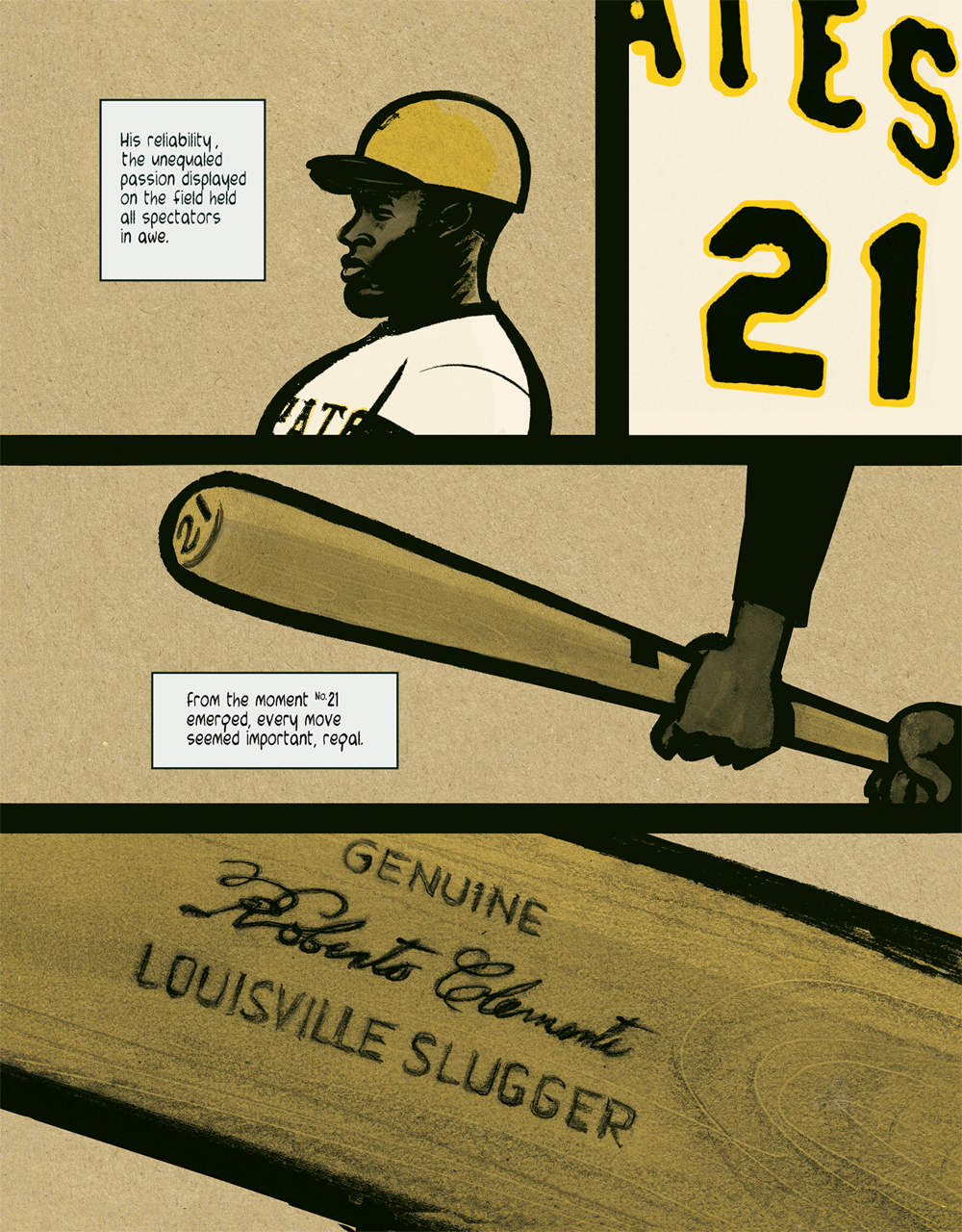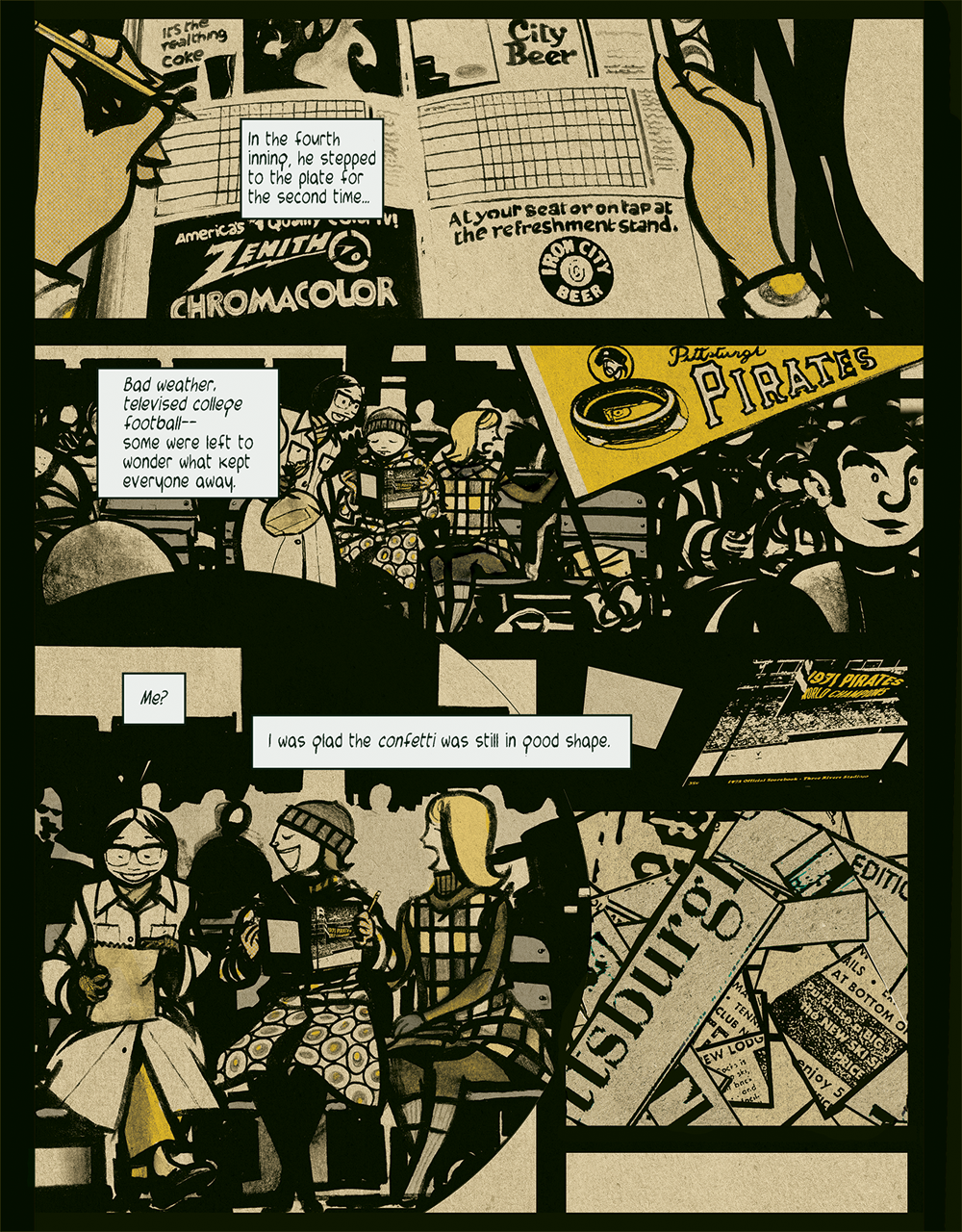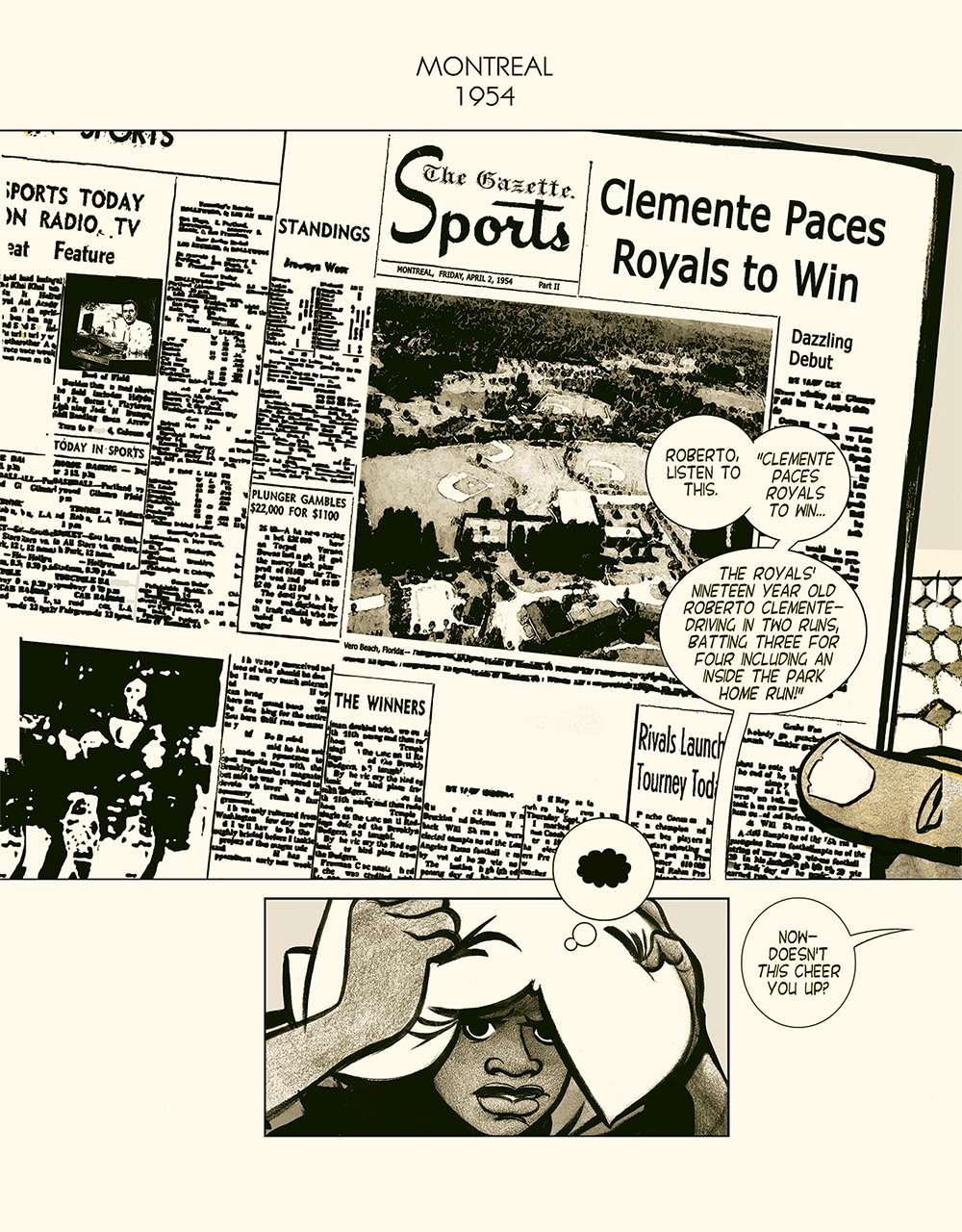While biographies are becoming more and more common these days, sports comics remain a bit of an anomaly (indeed, up till now James Sturm seemed to have had the market cornered). Let's hope Wilfred Santiago's latest book, 21: The Story of Roberto Clemente, starts to fill in that genre hole a little bit. Particuarly if they're as visually dynamic and playful as this book is. Chronicling Clemente's life from his early years in Puerto Rico to his untimely death in 1972, Santiago avoids the traditional traps of being too staid, didactic or reverential, creating a book that show us what made the Pittsburgh Pirates member so special without feeling like a history lesson. It's a book that's both fun as well as informative.
I talked to Santiago from his home in Chicago about the new book and what it took to get it into print.
Why Clemente? What was it about him that made you want to tell the story of his life?
I really wanted to do a biography. It’s something I wanted to do since my last project [2004's My Darkest Hour] and I had a list of different [potential] subjects. There were a number of factors as to why I chose Clemente in particular. I think it’s a compelling story to write about. The material was somewhat familiar [to me] and I like baseball .
I know that you’ve been working on this project for a long time. I seem to remember five or six years ago Fantagraphics announcing it and I think three years ago CBR did an interview with you about the book. Why did the book take so long and what were some of the challenges in putting it together?
It took years but every particular year had a different set of difficulties. It did take me a long time to go through various drafts. Sometimes there were periods of financial difficulties that didn't allow me to work much on the book because I had bills to pay and I had to figure out a way to do something that brought in an income. Sometimes there were technological difficulties. It took me a long time to upgrade to a very fast computer which was where a lot of the work took place. At least towards the end of the book I was able to work at a faction of the time [it took when] I began doing the book back in -- I don’t know when that was, 2005 or something like that.
Tell me a little bit about the research you did for the book.
There's a lot of documentation in baseball and the Internet brings access to all kinds of newspapers from whatever state or whatever year without having to go and incur travel expenses. Newspaper accounts of him were helpful, [although] you have to take an account word for word and then interpret it in a visual manner.
The book takes place in about three different decades. So newspapers and magazines were also very useful in capturing the look of a period. That was very important, because it’s not only about Clemente's struggles or the way he is or the type of person he is but also the context of when his life takes place. In fact, Clemente's life story is not that uncommon. He’s a young man with a background of poor means, who makes it to the major leagues and becomes famous. Baseball is full of those stories, as is the NBA and football. But it is the context of that story that makes it compelling. It took place in a period of American history where it was very challenging and he looking from the outside into all of this and trying to play the game and live his life.
Do you feel like Clemente broke barriers?
He certainly tried. He had difficulties because he found himself in the middle of an American fight if you will. He had to struggle with the language for example. He got in the middle of something that he was unfamiliar with and that was the institutionalized racism in America. He couldn’t understand the particulars of how something like that takes place. How there’s a place where a person can bring in a dog, but you might not be able to eat there because your skin is black. That was very hard for him and he spoke [out about it] whenever he [could]. He identified a lot with Martin Luther King Jr. and the civil rights movement. But he also made a point of pointing out the virtues of America in the sense that while this stuff was happening at the same time we are in a place where we have this opportunity to better ourselves.
When you were doing this research, was there anything that surprised you or did it mostly confirm what you already knew about Clemente?
It was mostly little details here and there. It tended to be very simple things that like he was in the Marine Reserves. That was something I had never heard of and I was pretty familiar with his life story and where he came from.
There aren’t many sports comics out there. What did you draw upon when making this book as far as the art goes? Did you read any sports manga?
There’s the biography aspect of his life and then it’s the baseball part of the comic book. For the biography [aspect] I wanted to have a very dynamic feel to it. I didn't want it to feel like a textbook. Actually, one of the things I looked at in preparation with 21 was H2 by Adachi Mitsuru. It was very interesting how you have this sports aspect of it and have sports intertwined in the story in many ways -- on an emotional level with the arc of the story. And it has a certain dynamic. It's hard to capture [Clemente's athleticism] by just looking at pictures. It’s very hard to draw these baseball scenes and not make them look a little static because all you have to rely on are these grainy black and white pictures. So that was a great influence. And Mad magazine.
One of the things I noticed about the book is usually in project like this is they're so reverential that they try to be as photorealistic as possible and you go in the opposite direction. You aren’t afraid to be cartoony or use caricature. There’s that great scene at the game where the hearts are literally popping out of the people’s chest. What made you decide to take that track as opposed to being more realistic?
Drugs. (laughter). No, I was thinking about it because again, I was trying not to make it … biographies to me have a static feel to them. I was trying to avoid [that] and I feel like cartooning helps you in expressing the story and what you’re trying to convey thtorugh the story. It was difficult too because I wanted it to be cartoony and realistic at the same time.
I wanted it to be fun. What's important was that it was exciting; that it could almost speak. That you could read the book in a very sort of sharp-paced way but you could also take the time and read through it at your leisure.
I also wanted to ask you about the book's color scheme which I thought was interesting as you mostly use yellow – yellow, brown and a little bit of blue here and there. Why?
In general the color scheme was inspired by the type of [Pittsburgh Pirates] uniform. I used blue because I could do sort of a black with blue and yellow. I only used two colors: a yellow color and a very dark blue. But I could get sort of a black color [with the two]. It was great that these colors were very compatible. If it had been a completely different combination, like red and green, that would have been horrible. Sometimes I was using color to help the reader understand certain things, like when people are talking in English the balloons are in yellow. When they’re talking in Spanish the balloons are in white. So there’s things like that. I tried to incoporate the color scheme in the narrative of the comic book.
What do you think Clemente’s legacy ultimately is? What do you see as his legacy as an athlete and as someone who came to the fore in a time of civil unrest?
I’m sure Puerto Ricans and Latinos might have a different angle, but I think probably a common source is that at the end of the day he was a person who was doing something he really loved and was also a person who ... thought he could help others and who felt he needed to help his brother, regardless of what he looked like or his past status or background. He also didn’t let barriers get in the way. He had a short temper, but he still didn’t let obstacles stop him from achieving those goals. If you want to do something you're going to get shaken and you'll have to fight and break obstacles but eventually you'll get to do it.
One of the things that I think helps sell that idea is that frequently in the book you don’t just focus on the games but you frequently cut to fans, so you see them reacting to Clemente as much as you see Clemente performing on the field. I thought that was an interesting choice. There’s that two page spread in the parking lot with people listening to the game on their car radios and watching on the color TVs.
Yeah. It’s like within the establishment he was pretty much ignored or not recognized for what he was doing in the field and the fans broke that wall if you will. By gaining through 18 years of fantastic performance and close encounters with fans and helping children, by the end of his career he had a fan base that the status quo couldn’t ignore any more and had to give him his props.
It must feel good to finally be finished a project that took you so long.
Yeah, I guess. At some point [awhile ago] it was done but for a number of reasons it had to be delayed again. I was like “What If I die? I want to see the book. I don’t want to die and then the book comes out three days later.” There was a lot of anxiety but when I got the book in my hands it was crazy. It was a good feeling to know that “Ok, now I can die.”
So what are you working on now? Do you have another project in mind?
Right now I’m just in the preperation but one of the things I’m working on is a graphic novel based on the life of John Brown, the abolitionist. I’m still working on it but if you go to Captainjohnbrown.com, I’ll have updates there as I work on it. It won’t take me that long. The first chapter is already done. I’m trying to stay ahead of it so I don’t have problems like that.





